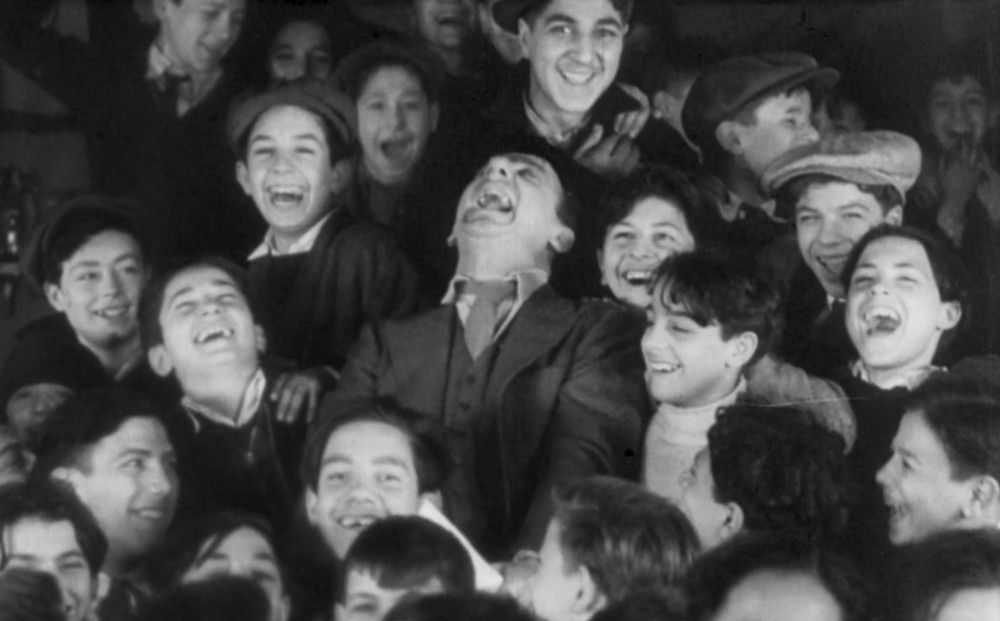NYC TREASURES FROM THE ARCHIVES
Rare NYC shorts and actuality footage, dating from 1898 to the late 1940s, preserved and restored by the Library of Congress, the Packard Humanities Institute, the UCLA Film & Television Archive, and the University of South Carolina Moving Image Research Collections. Curated by Bruce Goldstein, Film Forum Repertory Artistic Director.
Program includes select films from these three archives:
NYC TREASURES FROM THE LIBRARY OF CONGRESS
EARLY 20TH CENTURY VIEWS OF NYC FROM THE PAPER PRINT COLLECTION OF THE LIBRARY OF CONGRESS, 1898-1906. Digital, approx. 16 min. Live piano accompaniment by Steve Sterner.
IN THE STREET (1948, Helen Levitt, Janice Loeb, James Agee) Digital, approx. 16 min. Live piano accompaniment by Steve Sterner.
JAZZ OF LIGHTS (1954, Ian Hugo) Color and sound experimental film by the husband of author
Anaïs Nin. Digital, approx. 16 min.
TWO RESTORED “SOUNDIES”: musical shorts made for movie “jukeboxes,” particularly popular during WWII. Take the A Train (1941), with the Delta Rhythm Boys, and He’s a Latin from Staten Island (1940), with Ricardo Montalban (in his American film debut). Digital, approx. 6 min. Courtesy Kino Lorber.
THE MIDDLETON FAMILY AT THE WORLD’S FAIR (1939) 35mm, color. Excerpt, approx. 5 min. This sequence features a visit with “Electro the Robot” at the Westinghouse Pavilion.
Special thanks to Lynanne Schweighofer, George Willens, and Mike Mashon of the Library of Congress.
NYC TREASURES FROM THE PACKARD HUMANITIES INSTITUTE and UCLA FILM & TELEVISION ARCHIVE
20 NYC STORIES FROM HEARST METROTONE NEWS, 1929-1934
From 1914 to 1967, William Randolph Hearst’s company produced a weekly newsreel, which became known as Hearst Metrotone News in 1929. The Packard Humanities Institute and the UCLA Film & Television Archive are in the process of digitizing all 30,000 stories in the Metrotone library. Most of the 20 one-minute NYC stories in this selection haven’t been seen in over 90 years. Stories include NYS governor (and 1928 presidential candidate) Al Smith starting destruction of the old Waldorf Astoria to make way for the Empire State Building, Production Code czar Will Hays talking about the movies, a plane crashing into a Manhattan skyscraper, and much more. |
Digital, approx. 20 min.
Special thanks to David W. Packard and Pat Loughney (Packard Humanities Institute) and Todd Wiener and Steven K. Hill (UCLA Film & Television Archive).
NYC TREASURES FROM THE UNIVERSITY OF SOUTH CAROLINA, MOVING IMAGE RESEARCH COLLECTIONS
“TIMES SQUARE NOISE ABATEMENT” and “RADIO ROW” (1929)
The University of South Carolina’s Moving Image Research Collections contains eleven million feet of motion picture film from the Fox Movietone News Collection, dating from 1919 through 1934 and from September 1942 through August 1944, including unedited outtakes. These two astonishingly vivid records of NYC street life in 1929 show Times Square in sharp detail and “Radio Row,” the downtown electronics district completely torn down in the 1960s to make way for the World Trade Center.
35mm, approx. 12 min.
Special thanks to Daniela Currò, Benjamin Singleton, and Laura Major of Moving Image Research Collections at the University of South Carolina
“Seeing and hearing Manhattan in long takes is not only enchanting, but 21st-century audiences experiencing a projected 35mm print say it's transformative. Film historian Tom Gunning said it changed his conception of cinema. One sequence records technicians in Times Square, with its giant movie marquees and billboards, measuring sound levels for the NYC Noise Abatement Commission. But the noise becomes Cageian music in a sequence shot from atop a van moving slowly down "Radio Row" in lower Manhattan. Truck motors and ahooga automobile horns intermix with clopping horse hooves. Someone whistles for a yapping dog as a pile driver whangs amid steam shovels beneath an elevated train. A variety of music wafts from radio shops as the camera tracks down the street. When the van stops, an army of men in topcoats and snap-brim hats stares silently into the camera as a warbling soprano voice overtakes the soundscape. A jump cut switches from ‘Rigoletto' to syncopated horns in an Ellingtonian jazz orchestra. A time capsule of modernity.” — Dan Streible, NYU and Orphans Film Symposium



